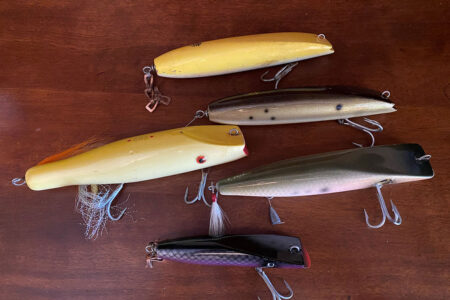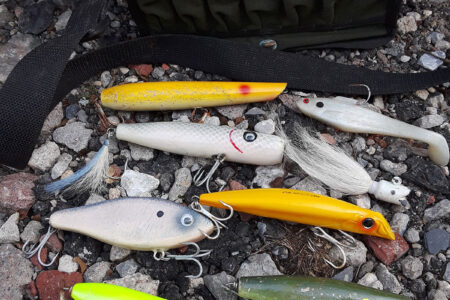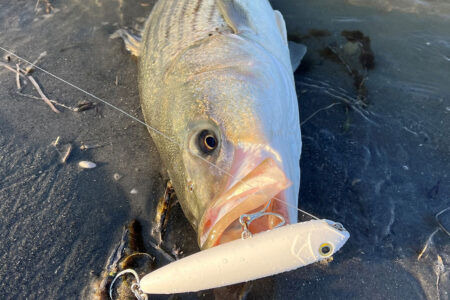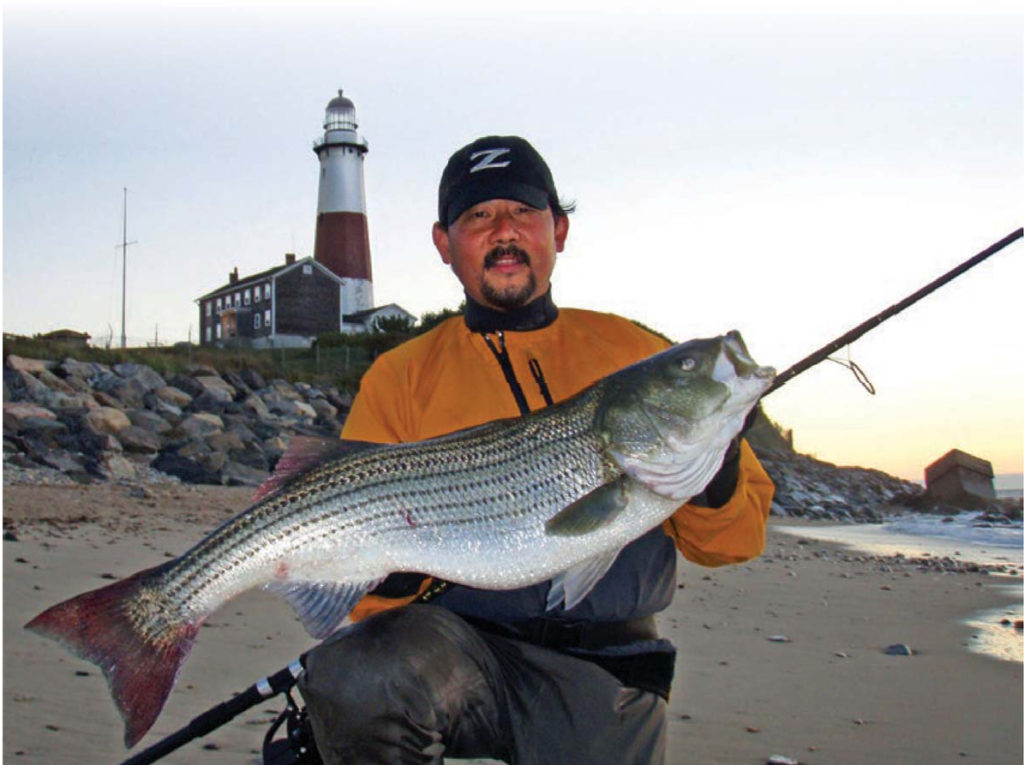
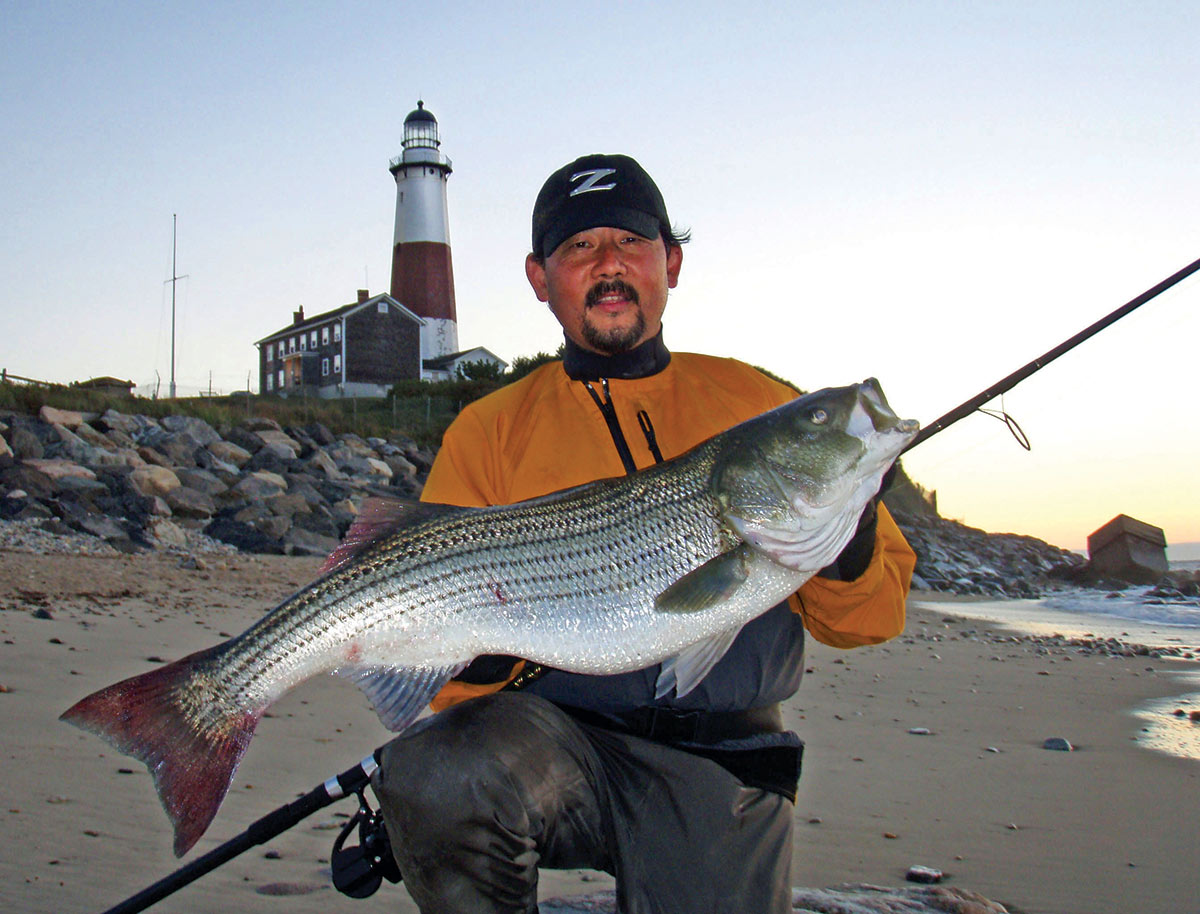
Fine tuning your presentation can make a world of difference in the surf fishing game.
It’s been a long summer and depending on where you ply your trade, surf fishing has ranged from stellar to downright poor over the past couple of months. But, and it’s a big but, it also depends on who you ask. As we ease our way into the fall run, it’s time to think about your approach because it has everything to do with the way you fish and what it takes to be successful. That’s especially true when it comes to fine tuning your lures and your presentation. Ultimately, it should improve your catch ratio as well as help you understand the finer points of Zen fishing. Let’s fast forward and see if we can’t help make you a better surfcaster. If you’re skeptical about this approach, read on and hopefully by the end of this article, you will have a better understanding of what I am writing about, and most importantly, of the insights to the surf fishing game revealed in this article.
I have dedicated over half a century of my life, and made sacrifices to engage in a fishing lifestyle in order to learn everything I possibly can about the finer points of fishing. I’ve fished all over the world in an effort to soak up as much fishing knowledge as possible, and now reside in a place referred to as “The Fishing Capital of the world.” I specialize in trophy fishing and new tackle innovations, and have mastered the art of catching multiple species, rather than specializing on just one. As a result, I’ve discovered that much of the same knowledge used to catch one species, say striped bass, can be used to catch other species like tarpon, snook and even largemouth bass. This is about understanding the finer points of fishing at the highest level, which is seldom discussed, often misunderstood, and frequently overlooked. Let’s view a few real life examples to help add some validity to this article, and explain the reasons behind them.
Some Examples
Montauk Flashback: During the prestigious Montauk Locals Surfcasting Tournament, I was fishing one night with local sharpie, Atilla Ozturk. Together we calculated the moon, tide phases and wind direction and how they factored into the striped bass migration. This is standard procedure for those who specialize in hunting big stripers, but only a small part of the equation. The challenging part was to not only outsmart the fish, but to also take into consideration the crowd of anglers that would be fishing that night. We would be fishing alongside other locals this night with the prime flood tide bucking an easterly wind.
Prior to fishing this area, we knew that adult bunker were being flushed out of the harbor by an ebbing tide along Shagwong, into Stepping Stones, and then passing through North and False Bar before reaching Scotts and the lighthouse. All of this happened during sunset. Atilla and I were pumped, and planned to strike during the first of the flood, in a pronounced rip positioned beneath the infamous Montauk Lighthouse. The problem was that it was during the weekend when the rocks would be crowded with other casters. What to do? Well, I pulled a 43-pound striper from amongst the crowd of anglers on my first cast. This may appear to be “dumb luck” but on to understand why it really happened.
Weakfish Touch: I have fished for weakfish for many years and despite a lot of talk about weakfish being non-existent, I had a spot that produced yellowfins every year like clockwork. With the aid of my weakfish logs, those tiderunners became very predictable and some years were so abundant that I was able to catch them on my fly rod. Prior to relocating to Florida, I divulged the area to a dear friend, Carlos DaCosta. Over the course of the next few years, he had been having lots of success in this location, but eventually he said the bite had died.
Last year, The Fisherman Magazine was conducting their annual Surf Show and I was scheduled to be one of the keynote speakers, so I was up in New York. I called Carlos in advance and told him that I was heading in early to take advantage of the weakfish action, but he advised me that the fish were no longer showing up. He had been fishing that spot just about every night with nothing to show for his effort. Instead, he suggested we make plans to fish other areas. I can be very stubborn, and I just needed to fish the spot for old times’ sake and to get my weakfish fix. I flew in to town knowing that the moon was near full and coincided with the last of the flood tide. The stage was set as it had been for many years before this night. We drove to the spot, donned our waders and light spinning outfits, and walked to the point. The terrain bore some noticeable changes, but the cool northerly breeze felt right, despite Carlos’ frequent reminders that “there are no weakfish here.” Wouldn’t you know it, on my first cast there was a subtle take and a nice weakfish was soon at my feet. Read on and I will reveal why I was so confident the weakfish would be there.
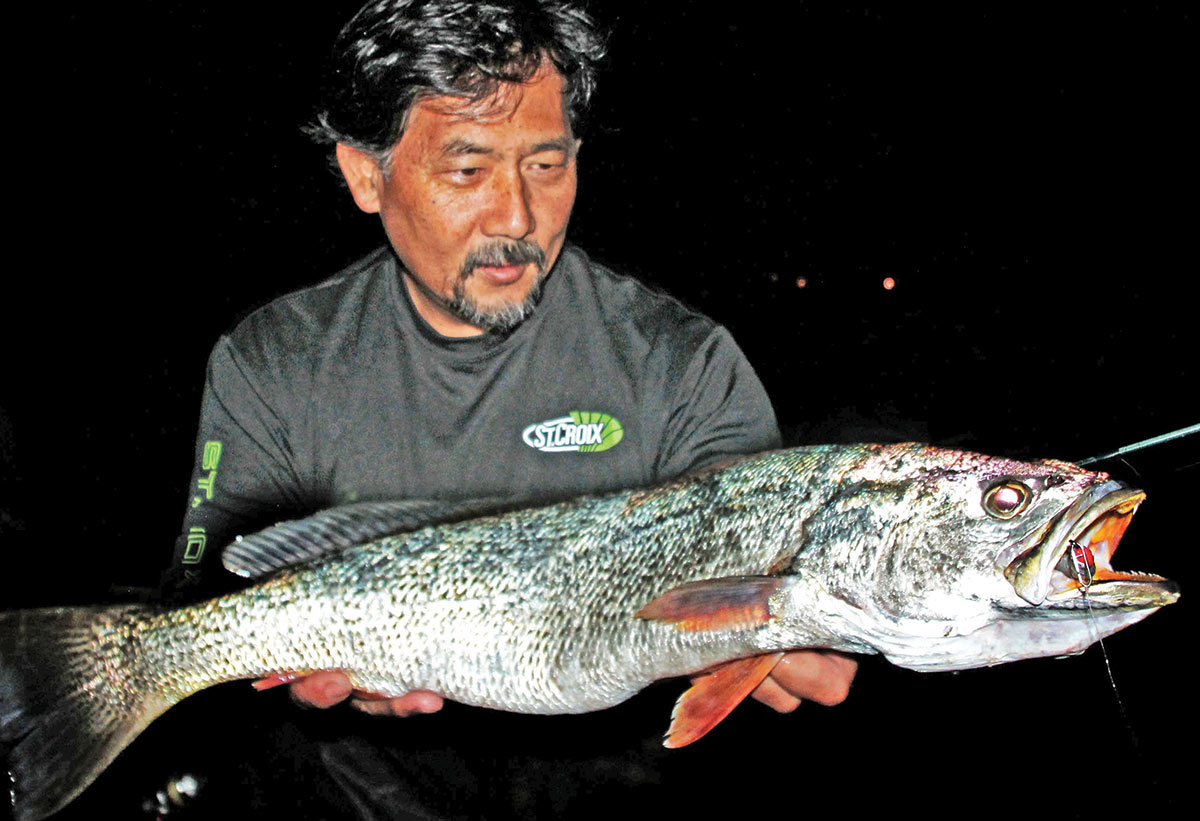
Daytime Cow Blitz: It was during an early fall run when stripers had begun their western and southerly migration and not many casters were even aware that the bass had arrived in the Long Island surf. There were pronounced blitzes of mid-teen bass gorging themselves on mullet and snappers as they fattened up for the long migration back to their wintering grounds. The action was happening like clockwork, but only a handful of casters were staged for the early morning rod bending exercise. I called my buddy, Rich Swisstack, a well-known New Jersey surfcaster, and suggested he ride up for a shot at some big stripers. To his surprise and as well as some consternation, we were not joining in the predictable bite taking place before us. I told Rich to sit tight and be ready for a once in a lifetime mega bass bite, and that it was likely that only he and I would be into that bite. In the meantime, we would watch the morning blitz action from inside my truck, and resist the temptation to join the rod bending action. I had a plan. We had arrived at the spot early and watched as the locals got out of their trucks without uttering a word, despite knowing each other. They were on a mission and quickly loaded their plug bags, pulled on their dry tops and waders, and joined the line of casters out on the bar. The wind had been blowing steadily out of the east the last couple of days. As soon as they saw the first splash of bait being harassed, a volley of tins, poppers and bucktails were launched skyward. They were having a field day crushing those aggressive teen size bass. Rich watched attentively and I noticed his knees jerking with anticipation, but I advised him to stay in the truck and just watch. Then a bit later, had to firmly “instruct” him to stay in the truck. The blitz of teen fish lasted approximately two hours and every caster walked off the bar content. As they removed their waders and tops, they exchanged laughs and then drove off, more than content with the morning’s action. As the others casters were leaving, Rich is sitting there disappointed and yelling that the bite is over. He even appeared to be slightly pissed off over not getting into what seemed like an amazing blitz. I smiled back and told him to just wait for the tide to turn and he would experience fishing like he had never experienced before. As it turned out, he was treated to catching a lifetime’s worth of monster cows on topwater plugs under a bright sun with just the two of us on the beach. We had multiple 30-pound cows on just about every cast after the tide turned and it lasted for nearly two hours. Read on and I will explain how we got into that phenomenal bite, and why it was so overlooked.
The Specifics
Montauk Flashback: The key to the success here lies in the presentation details. While everyone was using standard 2-ounce white bucktails or darters, I knew there were menhaden in the area and the secret was to find a perfect ambush spot and present the perfect bunker imitation. I used a 3-ounce olive, rubber shad worked close behind a far stretch of rocks, which was a perfect ambush spot for a big striper. Since the majority of casters fish directly under the light, I positioned myself further to the right (during the beginning of the incoming tide) knowing those rocks were untouched by other casters’ lures. That made the probability of a cow staging in that area a pretty good bet. Given that, I made a long cast and allowed my rubber shad to sweep behind those rocks. As soon it was near the rock, I jerked the paddle tail lure (to get maximum action) and the big bass never hesitated. Knowing that the fish would test my drag and take me to the left of the rip line, I had asked Atilla ahead of time to fish to my far left, so that I could steer the fish in his direction, and allow the big swells to put the bass basically onto his lap. Most people thought this was just a lucky fish, when in reality the entire approach was very calculated and the timing critical.
Weakfish Touch: The emphasis of the weakfish story is all about persistence and believing in making the perfect presentation regardless of any negative reports. I didn’t say Carlos was wrong, I just believe it is very important to trust and follow your instincts! As dumbfounded as Carlos was when he saw my weakfish, I knew there would be at least one fish in that area. Why? Because there were signs of baitfish at the right tide, with the right weather conditions, right moon stage and the confidence that comes with having a solid understanding based on past success and established patterns. In other words, the odds of finding that weakfish were better than good because all of the right factors were in place, in conjunction with the presence of baitfish.
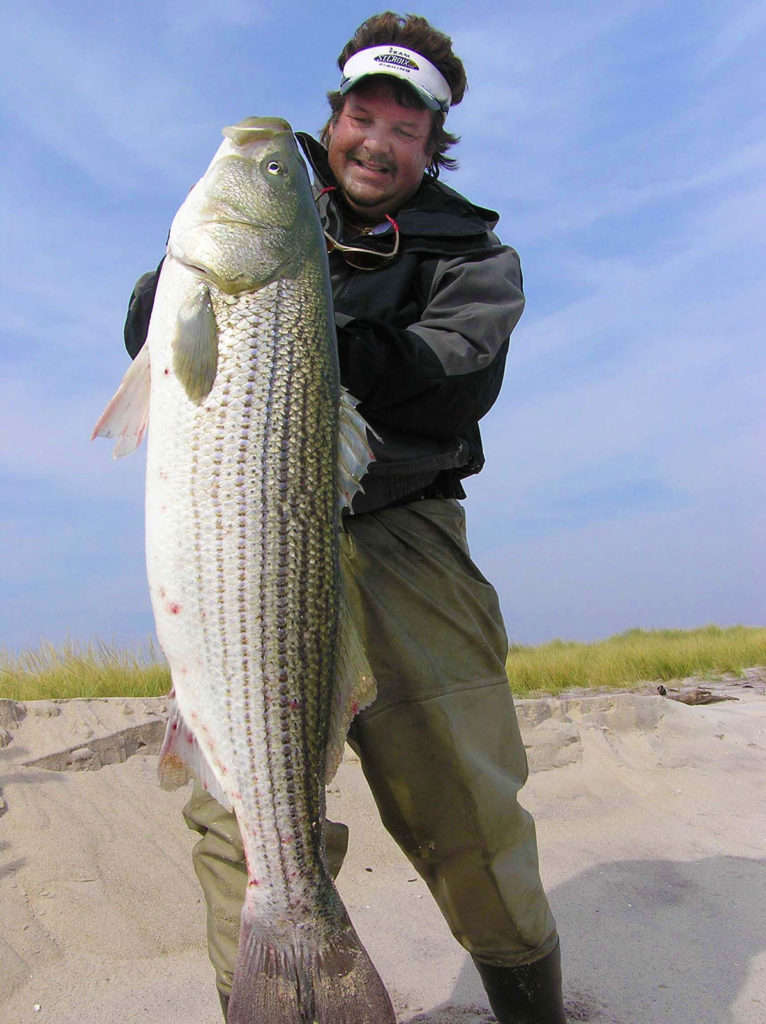
Daytime Cow Blitz: The reason I decided not to join the blitz of teen stripers is simple. I waited for the trophy bass run during the turn of the tide and did not want to disclose that bite to the group of anglers already there. Big fish tend to concentrate on different tide phases and they don’t like to compete with the smaller fish. In addition – truth be told – trophy fish frequently feed during different stages of the tide and during slower stages of the current. Why – because trophy stripers are big, fat and downright lazy feeders. They usually feed just before and after the slack phase because they can move quicker and they’ll pick up scraps left by the more aggressive teen size fish. I also like to think they didn’t get big by being stupid. That is the reason why I didn’t want folks to know about the bite. Lots of lures hitting the water at a steady pace can actually spook big stripers and put them off their feed under certain conditions. I wanted this big fish bite to last as long as possible.
Remember that tides play a critical role and understand that different year classes of fish will often feed on different phases of the tide. Most important – keep an open mind toward working a variety of lures and apply different actions. I hope the above tips and insights will help you be more successful, not only during this year’s fall run, but throughout your time in the surf.
| TIPS ON PRESENTATION |
|---|
| Here are some of the lure presentation tips that were applied in the above examples. The key to our success has a lot to do with matching the hatch and adding the necessary action to entice the bite.
Darters and Bottle Plugs: Despite what many people believe, you will have better success when you make a long cast, and pause and jerk during the retrieve to get the fish’s attention. Bucktails: It’s important to know the right weight to keep it as close to the bottom as possible. A good bucktailer knows how to “sweep” the lure just above the bottom, occasionally allowing it to kick up puffs of fish attracting sand. Pencil Poppers and Poppers: The key to success when tossing pencil poppers and standard poppers is knowing where the “fish highway” is, and allowing the lure to follow the flow of the current. I can’t stress that enough. Diamond Jigs and Tins: Don’t think of these lures as just a way to gain casting distance. A properly worked diamond jig and or “tin” can be extremely deadly when dragged along a sandy bottom because it imitates a sand eel and a baitfish in stress. Swimmers and Suspending Minnows: Keep in mind to never just cast and retrieve. I’ve found an occasional jerk, twitch and pause can be extremely effective, and will sometimes entice a finicky fish to strike. |
